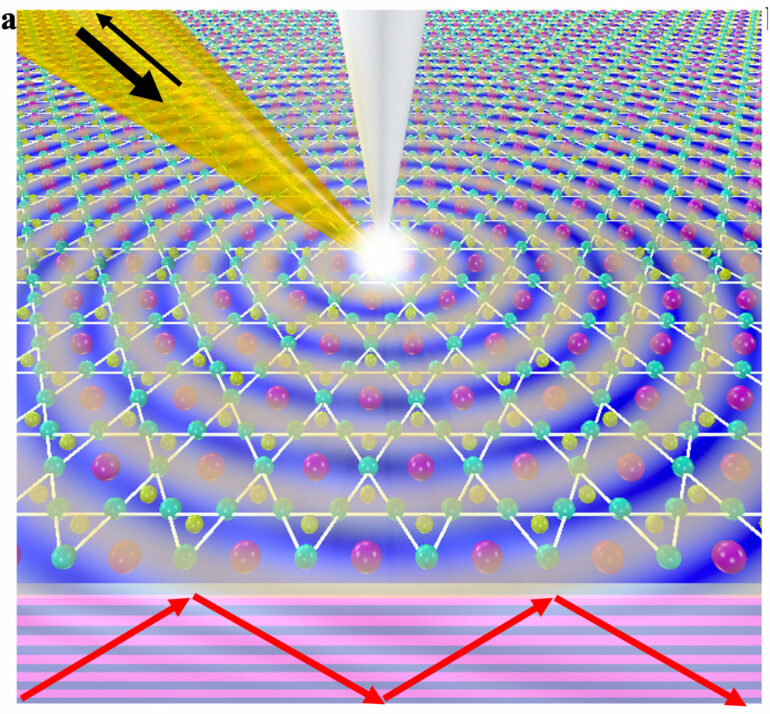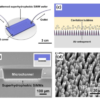A superconductivity theory proposed by a Würzburg physics team has been validated in an international experiment that showed Cooper pairs display wave-like distribution in Kagome metals. The finding will enable new technological applications such as superconducting diodes.
For about 15 years, Kagome materials with their star-shaped structure reminiscent of a Japanese basketry pattern have captivated global researchers. Only since 2018, have scientists been able to synthesize metallic compounds featuring this structure in the lab.
Thanks to their unique crystal geometry, Kagome metals combine distinctive electronic, magnetic, and superconducting properties, making them promising for future quantum technologies.
Professor Ronny Thomale of the Würzburg-Dresden Cluster of Excellence ct.qmat—Complexity and Topology in Quantum Matter, and Chair of Theoretical Physics at the University of Würzburg (JMU) provided key insights into this class of materials with his early theoretical predictions.
Recent findings published in Nature suggest these materials could lead to novel electronic components, such as superconducting diodes.
Kagome superconductor shakes up science
In a paper posted on the preprint server arXiv on February 16, 2023, Professor Thomale’s team proposed that a unique type of superconductivity could manifest in Kagome metals, with Cooper pairs distributing in a wave-like fashion within the sublattices. Each “star point” contains a different number of Cooper pairs. That paper has now been published in Physical Review B.
Thomale’s theory has now been directly substantiated for the first time in an international experiment, causing a worldwide sensation. This overturns the earlier assumption that Kagome metals could only host uniformly distributed Cooper pairs.
Cooper pairs—named after physicist Leon Cooper—are formed at very low temperatures by pairs of electrons, and are essential for superconductivity. Acting collectively, they can create a quantum state, and can also move through a Kagome superconductor without resistance.
“Initially, our research on Kagome metals like potassium vanadium antimony (KV3Sb5) focused on the quantum effects of individual electrons, which, although not superconducting, can exhibit wave-like behavior in the material,” explains Thomale.
“After experimentally confirming our initial theory on electron behavior with the detection of charge density waves two years ago, we tried to find additional quantum phenomena at ultralow temperatures. This led to the discovery of the Kagome superconductor. However, global physics research in Kagome materials is still in its infancy,” Thomale notes.
Transmitting wave motion
“Quantum physics is familiar with the pair-density wave phenomenon—a special form of a superconducting condensate. As we all know from cooking, when steam cools, it condenses and becomes liquid.
“Something similar happens in Kagome metals. At ultra-low temperatures around –193°C, the electrons reorganize and distribute in waves in the material. This has been known since the discovery of charge density waves,” explains doctoral student Hendrik Hohmann, a key contributor to the theoretical work alongside his colleague Matteo Dürrnagel.
“When the temperature drops to –272° (almost absolute zero), electrons join together in pairs. These Cooper pairs condense into a quantum fluid that also spreads in waves through the material, enabling resistance-free superconductivity. This wave-like distribution is therefore transmitted from electrons to Cooper pairs.”
Previous research on Kagome metals has demonstrated both superconductivity and the spatial distribution of Cooper pairs. The surprising new finding is that these pairs can be distributed not just evenly, but also in a wave-like pattern within the atomic sublattices, a phenomenon termed “sublattice-modulated superconductivity.”
Dürrnagel adds, “The presence of pair density waves in KV3Sb5 is ultimately due to wave-like electron distribution at temperatures 80° above superconductivity. This combination of quantum effects harbors significant potential.”
The ct.qmat researchers are now searching for Kagome metals where Cooper pairs exhibit spatial modulation without charge density waves arising prior to superconductivity. Promising candidates are already under study.
Nobel Prize-winning Josephson Effect enables breakthrough
The experiment, pioneering in its direct detection of Cooper pairs distributed in wave-like patterns within a Kagome metal, was developed by Jia-Xin Yin at the Southern University of Science and Technology in Shenzhen, China. It utilized a scanning tunneling microscope equipped with a superconducting tip capable of directly observing Cooper pairs.
The design of this tip, ending in a single atom, is based on the Nobel Prize-winning Josephson effect. A superconducting current passes between the microscope tip and the sample, enabling the direct measurement of the Cooper pairs’ distribution.
“The current findings are another milestone towards energy-efficient quantum devices. While these effects are currently observable only at the atomic level, once Kagome superconductivity is achievable on a macroscopic scale, novel superconducting components will become feasible. And this is what drives our basic research,” states Professor Thomale.
Outlook
While the world’s longest superconducting cable has been installed in Munich, intensive research is still being carried out on superconducting electronic components. The first superconducting diodes have already been developed in the laboratory, but they rely on a combination of different superconducting materials.
By contrast, the unique Kagome superconductors, with their inherent spatial modulation of Cooper pairs, act as diodes themselves, offering exciting possibilities for superconducting electronics and loss-free circuits.
More information:
Hanbin Deng et al, Chiral kagome superconductivity modulations with residual Fermi arcs, Nature (2024). DOI: 10.1038/s41586-024-07798-y
Tilman Schwemmer et al, Sublattice modulated superconductivity in the kagome Hubbard model, Physical Review B (2024). DOI: 10.1103/PhysRevB.110.024501
Provided by
Julius-Maximilians-Universität Würzburg
Citation:
Validation of superconductor theory: Cooper pairs display wave-like distribution in Kagome metals (2024, August 23)



